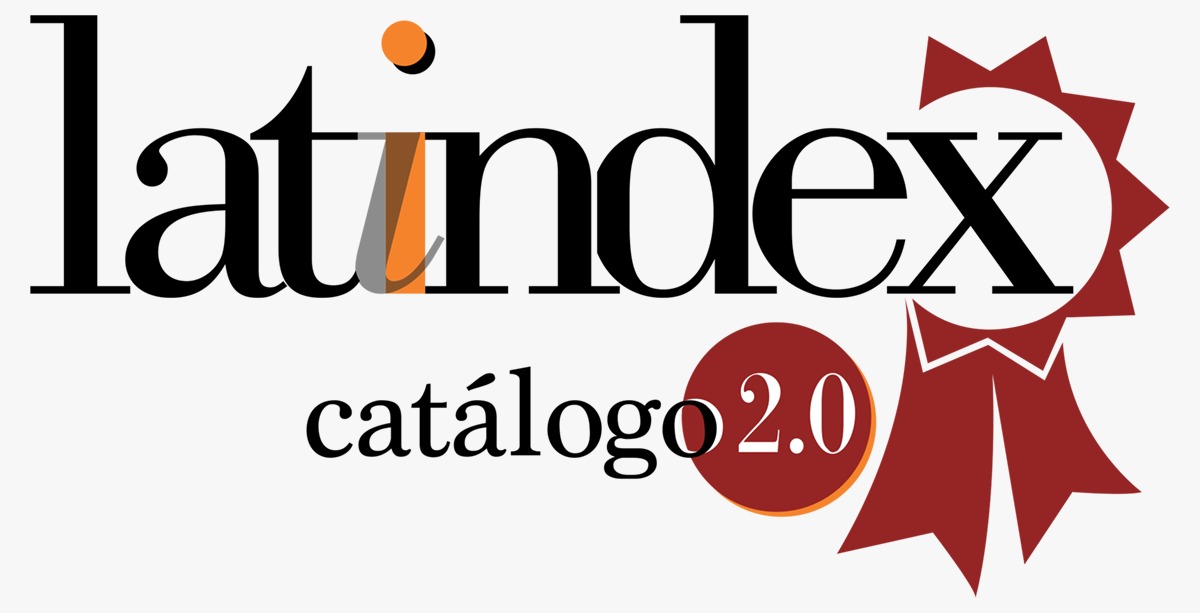The global crisis and internal peace: Modeling E4P
DOI:
https://doi.org/10.47865/igob.vol4.2021.161Keywords:
Industry 4.0, Singularity, Entrepreneurship, Social PeaceAbstract
The article describes the current practices of irenologists and peacebuilders; and, foreseeably, the future ones on the horizon of the next 50 years, in a world dominated by Industry 4.0, robotics, artificial intelligence and the internet of things. Through a quantitative approach, an empirical socioeconomic analysis is carried out using descriptive and inferential statistics, based on a field study of the case of Villa El Salvador in Peru trying to measure, by analogy, the real viability of some hypotheses put forward by great economists and sociologists (referring to the scenario of social or internal peace at the end of the XXI century) that we call the LCommons hypothesis. Finally, a bivariate model is proposed, made up of the independent variables: culture of peace and entrepreneurship projects for peace (E4P); being the dependent variable: empirical peace called eirênê.
Downloads
References
Almeida, R. (2007). Inequality and Employment in a Dual Economy: Enforcement of Labor Regulation in Brazil (English). Washington, D.C.: World Bank Group.
Amigos de Villa (2010). Historia de una Ciudad: Villa El Salvador, Lima, Perú. Recuperado de: http://www.amigosdevilla.it/historia/cronologia01.html
Becattini, G. (1989). Sectors and/or districts: some remarks on the conceptual foundations of industrial economics. En: E. Goodman y J. Bamford, (Eds.), Small firms and industrial districts in Italy. Londres: Routledge.
Bellandi, M. (1989). The industrial district in Marshall. En E. Goodman y J. Bamford, (Eds.), Small firms and industrial districts in Italy (103-155). Londres: Routledge.
Brodie, B. (1959). The Anatomy of Deterrence. Strategy in the Missile Age (264-304). Princeton, US: Princeton University Press.
Bueno de Mesquita, et al. (1999). An Institutional Explanation of the Democratic Peace. American Political Science Review, 93(2), 791–807.
Carbonetto, D. y otros. (1987). El Perú Heterodoxo. Un Modelo Económico. Lima: INP.
Castro-Pozo, H. (1979). Nuestra Comunidad Indígena (2. ª ed.). Lima: Perú Graf.
Cepal (1965). La reforma agraria. En Óscar Delgado (Eds.), Reformas agrarias en América Latina. México D. F.: Fondo de Cultura Económica.
Choi,S.(2011) Re-evaluating Capitalist and Democratic Peace Models. International Studies,55(1):1–11.
Contreras,C.(1989). Comunidades campesinas y nativas: normatividad y desarrollo. Lima: Fundación Friedrich Naumann.
Dafoe, Allan. (2011). Statistical Critiques of the Democratic Peace: Caveat Emptor. American Journal of Political Science, 55(2), 247-262.
Deloitte, I. (2018). Industry 4.0. Are you ready? Deloitte Review, 22(1).
Estrin, S. (1991). Yugoslavia: The Case of Self-Managing Market Socialism. Journal of Economic Perspectives, 5(4), 187–194.
Fundación Príncipe de Asturias. (1987). Premio Príncipe de Asturias de la Concordia, 1987. Acta del Jurado. Oviedo: Oficina de Comunicaciones de la Casa de Su Majestad El Rey.
Galtung, J. (2012). Positive and Negative Peace. En C. Webel y J. Johansen (Eds.), Peace and Conflict Studies: A Reader (págs. 75-79). London: Routledge.
Galtung, J. (2003). Tras la violencia, 3R: reconstrucción, reconciliación, resolución. Afrontando los efectos visibles e invisibles de la guerra y la violencia. Gernika: Bakeaz/Gernika Gogoratuz.
Galtung, J. (1969). Violence, Peace and Peace Research. Journal of Peace Research, 6(2), 167–191.
García-Covarrubias, J. (2004). The Significance of Conventional Deterrence in Latin America. Military Review, 84(2).
Gartzke, E. (2007). The Capitalist Peace. American Journal of Political Science, 51(1), 166-191.
Garvan, M. (2019). A 29 años del "Fujishock": estado de la economía de los años noventa. El Comercio, 8.08.2019.
Hall, I. (2017). De la colectividad a la comunidad. Reflexiones acerca del derecho de propiedad en Llanchu, Perú. Revista de Antropología Social 26(2), 379-398.
Hughes, H. (2001). The Evolution of Dual Economies in East Asia. En D. Lal y R. Snape (Eds.), Trade, Development and Political Economy.London: Palgrave Macmillan.
Huth, P. y Russett, B. (1988). Deterrence Failure and Crisis Escalation. Paul International Studies Quarterly, 32(1), 29-45.
ILO (2011). Global Employment Trends for Youth: 2011. Geneva:ILO-– United Nations.
IPE (2016) Consecuencias económicas de la “revolución” de Velasco. Lima: Instituto Peruano de Economía. Recuperado de: https://issuu.com/abrechtgroupsac/docs/revolucion20velasco
Keynes, J. (1931). Economic Possibilities for our Grandchildren. En J. M. Keynes, Essays in Persuasion. London: Harcourt Brace. 358-375.
Keynes, J. (1987). Las consecuencias económicas de la paz. Barcelona: Grijalbo. (Original de 1919).
Kurzweil, R. (2005). The Singularity Is Near: When Humans Transcend Biology. New York: Viking.
Laos, A. (2004). Las Comunidades Campesinas en el siglo XXI. Lima: Grupo Allpa.
Marshall, A. (1923). Industry and trade (4. ª ed.). Londres: MacMillan.
Marshall, A. (1963). Principios de economía. Madrid: Ed. Aguilar. (Original publicado en 1961).
Martín-Sánchez, J. (2004). La Revolución Peruana: Ideología y Práctica de un Gobierno Militar, 1968-1975. Sevilla: Escuela de Estudios Iberoamericanos.
Marx, K. (1992). Critique of Hegel’s Philosophy of Right. Introduction. London: Penguin Books.
Mayor-Zaragoza, F. (2009). La problemática de la sostenibilidad en un mundo globalizado. Revista de Educación “Educar para el Desarrollo sostenible”, (número extraordinario)25-53.
McDonald, P. (2009). The Invisible Hand of Peace: Capitalism, the War Machine, and International Relations Theory. Cambridge: Cambridge University Press.
Miklian, J. et al (2018). Business and Peacebulding: Seven Ways to Maximize Positive Impact. Oslo: Peace Research Institute (PRIO).
Miklian, J. y Schouten, P. (2014). Business For Peace: The New Paradigm of International Peacebuilding and Development. Oslo: Peace Research Institute (PRIO).
Mousseau, M., Omer F., y Ungerer, J. (2013). The Progress of Knowledge: The Market-Capitalist Peace Does the Market-Capitalist Peace Supersede the Democratic Peace? The Evidence Still Says Yes. En G. Schneider y N. Gledistsch (Eds.), The Capitalist Peace: The Origins and Prospects of a Liberal Idea. London and New York: Routledge.
Mousseau, M. (2012a). The Capitalist Civil Peace. International Studies Quarterly 56(2): 470–483.
Mousseau, M. (2012b) Market-Capitalist or Democratic Peace. En J. Vásquez (Ed.), What Do We Know About War? Lanham, MD: Rowan-Littlefield.
Mousseau, M. (2000) Market Prosperity, Democratic Consolidation, and Democratic Peace. Journal of Conflict Resolution 44(1): 472–507.
Murra, J. (1984). Andean Societies before 1532. En Cambridge University Press (Ed.), The Cambridge History of Latin America Vol. I. Cambridge (UK): Cambridge University Press.
Novo, M. y Mayor, F. (2006). El desarrollo sostenible: su dimensión ambiental y educativa. Madrid: UNESCO - Pearson Educación S.A.
Nurse, K. (2007). Culture as the Fourth Pillar of Sustainable Development. Small States. Economic Review and Basic Statistics, 11, 28-40.
OECD (2012). Evaluating Peacebuilding Activities in Settings of Conflict and Fragility: Improving Learning for Results, DAC Guidelines and References Series. París: OECD Publishing.
ONU (1999). “Declaración y Programa de Acción de una Cultura de Paz”, RES/53/243. NY: UN.
OIT (2020). El futuro del Trabajo en el Mundo de la Industria 4.0. Buenos Aires, OIT& Unión Industrial Argentina.
Ostrom, E. (2009). El gobierno de los bienes comunes. La evolución de las instituciones de acción colectiva. México D.F., Fondo de Cultura Económica (FCE).
Pease, F. (2012). Los incas en la colonia. Lima: Ministerio de Cultura/ Museo Nacional de Arqueología, Antropología e Historia del Perú.
Plan Inca. (1974). Plan de Gobierno Revolucionario de la Fuerza Armada del Perú. Secretaría de la Presidencia de la República. Lima: Ed. C.L. Cabrera V.
Popkova, E., Ragulina, Y. y Bogoviz, A. (2019). Industry 4.0: Industrial Revolution of the 21st Century. Warzaw: Polish Academy of Sciences.
Ramos, E. (2010). Sueños sobre arena: proceso histórico de Villa El Salvador. Lima: Universidad de Ciencias y Humanidades, Fondo Editorial.
Rifkin, J. (2014). The Zero Marginal Cost Society. New York: Palgrave/McMillan.
Rifkin, J. (2013). El fin del trabajo. Nuevas tecnologías contra puestos de trabajo: el nacimiento de una nueva era. Madrid: Booket.
Rifkin, J. (2000). La era del acceso. La revolución de la nueva economía. Barcelona: Paidós.
Schelling, T. (1966). Arms and Influence. Connecticut: Yale University Press.
Schumpeter, J(1935). Analysis of Economic Change. Review of Economics and Statistics,17(4), 2-10.
Schumpeter, J.A. (1983). The Theory of Economic Development. An Inquiry into Profits, Capital, Credit, Interest, and the Business Cycle. New Jersey (US): Transaction Publisher.
Schwab, K. (2016). The Fourth Industrial Revolution. Geneva: World Economic Forum.
SELA (1991). Desarrollo industrial y cambio tecnológico – Políticas para América Latina y el Caribe en los noventa. Caracas: Nueva Sociedad, Sistema Económico Latinoamericano.
Singer, H. (1990). Dualism revisited: a new approach to the problems of the dual society in developing countries. Journal of Development Studies, 7(1), 60-75.
Stern, P. et al. (1989). Perspectives in Deterrence. NY: Oxford University Press.
Stiglitz, J. (2019). Cooperatives and the Social Economy: Key Elements for Economic Balance and the Future and Challenges of Economic Development in Costa Rica and the Region. NY: Columbia University.
Távara, J. (1994). Cooperando para competir. Redes de producción en la pequeña industria peruana. Lima: DESCO.
UN (2015). The Millennium Development Goals Report, 2015. New York: United Nations.
UN. (2005). International Year of Microcredit, 2005. Final Report. New York: United Nations Capital Development Fund.
UNGCA. (2018). United Nations Global Compact Academy. https://academy.unglobalcompact.org/learn
UNPK (2008). How We Are Funded? Recuperado https://peacekeeping.un.org/en/how-we-are-funded
Downloads
Published
How to Cite
Issue
Section
License

This work is licensed under a Creative Commons Attribution-NonCommercial-ShareAlike 4.0 International License.
Esta obra está bajo una licencia internacional Creative Commons Atribución-NoComercial-CompartirIgual 4.0.
















